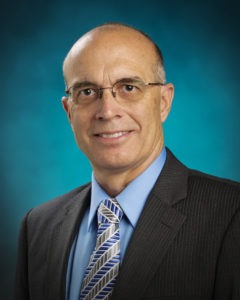
Each Society for Vascular Surgery (SVS) president wishes for a memorable annual meeting, outgoing SVS president Kim Hodgson, MD, noted during his State of the SVS welcome address Saturday.
Showing a picture of the animated genie from Disney’s “Aladdin,” he wryly observed that when making wishes, “be very specific.” A virtual meeting, he went on, is “not quite what I had in mind!”
His actual presidential address—another casualty of COVID-19 as the SVS Vascular Annual Meeting (VAM) fell victim to the pandemic—will come at next year’s VAM set to be staged in San Diego. That means attendees will receive a two-for-one, he added mirthfully, as incoming president Ronald L. Dalman delivers his outgoing address in 2021.
Hodgson’s State of the SVS talk opened the virtual replacement for VAM, SVS ONLINE: “New Advances and Discoveries in Vascular Surgery,” on Saturday, June 20. The address not only looked back, but also ahead.
The past included the pivot to an online meeting once COVID-19 made a live event impossible and the coronavirus-inspired Town Halls presented to help address members’ issues. The future covered the progress made on several important initiatives of his presidency, including:
Inclusion and diversity. A series of slides indicated diversity statistics within the SVS membership, which varied by member age. During his tenure as president, the Executive board established an Equity, Diversity and Inclusion Task Force to look at the entire issue broadly. “The Task Force has documented who we are today,” said Hodgson of the statistics he showed. “We now need to ask, how do we address our remaining diversity challenges, and I am encouraged that the Task Force has proposals to tackle just that.”
Appropriateness of care. “Good outcomes are not enough,” said Hodgson, in discussing data that indicated some providers are performing certain peripheral interventions, including atherectomies, at a rate far higher than others. “ … Statistical analysis looking for outlier providers and institutions may be the methodology of the future,” he said. And with provider billing data publicly available for people to research practice patterns, “be forewarned.”

Surgeons’ value. Hodgson announced the first two pilot sites for the Vascular Center Verification and Quality Improvement Program, under development for the past 18 or so months to develop standards around the optimal resources and protocols for best outcomes in vascular care. The two are the Albany Medical Center and University of Pittsburgh Medical Center (UPMC) operated by past residents R. Clement Darling III and Michel Makaroun, respectively.
An app for Supervised Exercise Therapy (SET), and creation of the SVS Information Technology Task Force. Pilot testing for the SVS SET app, to help patients with peripheral arterial disease (PAD) better manage their disease at home, begins in July. The app, powered by Cell-Ed, is the first-of-its-kind and has even caught the attention of Apple. Healthcare executives also have expressed interest.
A bird “whispered ‘SET app’ in my ear,” said Hodgson of the idea for SVS SET. Supervised exercise therapy is highly supported for treating PAD, but often isn’t ordered, because of expense, poor reimbursement, inconveniences and, if not incorporated with lifestyle changes, limited in impact, he said
With interest building in the app, Hodgson said, he may have more announcements on digital health issues coming soon.












